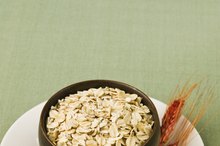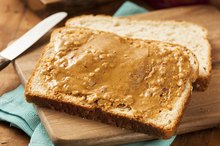Does Walking Help Lower Triglycerides?
Inactivity is a lifestyle factor that plays a role in chronic disease development, but you don't have to spend hours at the gym to reduce your risk. When it comes to cholesterol, being sedentary impacts your overall levels. Inactivity increases low-density lipoprotein and triglycerides, which are fats that can contribute to heart disease. Even a modest amount of low-impact exercise such as brisk walking exerts major benefits.
Significance
Keeping your triglycerides in check is a good defense against cardiovascular disease. Triglycerides are present in many everyday foods, including butter, meat and starchy foods. In addition, when you eat excess calories, your body converts them to triglycerides and stores them in your fat tissues. However, it is your blood triglyceride levels that are a major concern. Too much of this sticky substance can build up on your artery walls causing them to narrow, which is a recipe for heart attack and stroke. Aim to keep your triglycerides below 150 milligrams per deciliter.
Beneficial Effects
Is Oatmeal Bad for Triglycerides?
Learn More
Researchers at Duke University examined the effect of exercise on 240 otherwise healthy, overweight adults and published their findings in the March 2007 issue of the "Journal of Applied Physiology." They divided the participants into treadmill walking, elliptical training, stationary biking and sedentary groups and measured lipid levels weekly for six months. Inactivity resulted in significant increases in triglycerides, while those who exercised, including walking, experienced significant decreases in triglyceride levels.
Duration
Accumulating short walks is just as beneficial as longer walks. Loughborough University researchers compared the effects of 30 minutes of brisk walking to accumulating short bouts of brisk walking and published their findings in the November 2008 issue of the "American Journal of Clinical Nutrition." They found that accumulating 30 minutes of brisk walking in 3 minute bouts throughout the day is equally effective at reducing triglyceride levels as walking briskly for 30 continuous minutes.
Considerations
Why is Regular Exercise Important For Children?
Learn More
Walking is an easy and safe way for people of all age groups to improve their triglyceride levels. If you're unable to go for a 30-minute walk, make your movements throughout the day count. The next time you're heading down the hall of your office to make copies, or refill your coffee mug, walking briskly can make all the difference. Moderation is key. The Duke researchers found that moderate, but not vigorous exercise resulted in sustained reduced triglycerides even two weeks after stopping.
Related Articles
References
- American Heart Association: Triglycerides
- Journal of Applied Physiology: Inactivity, Exercise Training and Detraining, and Plasma Lipoproteins. Strride: a Randomized, Controlled Study of Exercise Intensity and Amount
- American Journal of Clinical Nutrition: Accumulating Short Bouts of Brisk Walking Reduces Postprandial Plasma Triacylglycerol Concentrations and Resting Blood Pressure in Healthy Young Men
Writer Bio
Janet Renee is a clinical dietitian with a special interest in weight management, sports dietetics, medical nutrition therapy and diet trends. She earned her Master of Science in nutrition from the University of Chicago and has contributed to health and wellness magazines, including Prevention, Self, Shape and Cooking Light.









